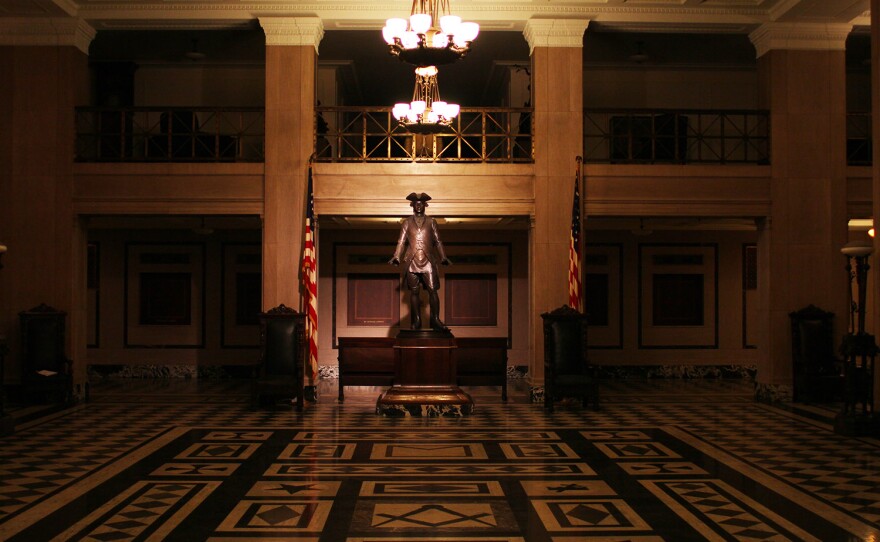Owners of the New Masonic Temple on Lindell Boulevard in Midtown St. Louis hope the New Year brings renewed interest in the building, which is for sale. Building manager John Vollman has spent years volunteering at the space.
“It’s a pleasure to come in here most days. You just feel the history,” said Vollman.
In December, the Masons announced their intention to sell the structure for $6 million. Although the building was dedicated in 1926, parts of it remain unfinished. Scott Martin of Hilliker Corp. represents the Masons in the sale. According to Martin, the Masons' goal is to downsize and dedicate more resources to the less fortunate.
“As I understand it they would like to have more money to do their charitable work,” said Martin. That work is important, for according to momasons.org, the Masonic fraternity is a social organization that emphasizes “personal study, self-improvement, and social betterment via individual involvement and philanthropy.”

Entering the temple is like walking into an unused museum. Giant pillars ring the marble floor. A bronze statue of Thomas Jefferson stands across the lobby. St. Louis artist Jessie Housley Holliman’s only remaining indoor fresco covers the wall just above the front doors.
A space in the back is a raw cement skeleton of what was meant to be a premier theater. The inside is dark and drop cloths hang like veils to another world from the balcony. Wooden row seats ring the floor that is marked in faded school-bus yellow paint to serve as a basketball court. It’s a 48 foot tall vault of darkness, left barren from when the Depression dried up construction money. Vollman isn’t put off by the darkness or the unfinished nature of the space.
“It’s not creepy. The building is very warm, to me at least,” he said.
A hand-operated elevator transports people from floor to floor. The third floor is the next full floor after the ground level. It contains three lodge rooms and a full-service dining room and kitchen. One lodge room has plush carpet and light blue walls - a color that brings to mind a '70s leisure suit more than business conversation.
The dining room is chalky pink and filled with empty up-turned chairs. Martin, the agent, said the space would be great as a cafeteria for businesses.
“It would make a pretty dramatic statement for a corporation to have their offices here,” he said.

Near the temple’s pinnacle is the commandery, or assembly room, in this case a multistory room with lush crimson carpeting. Two pillars frame the central dais. Vollman said the pillars arrived as whole columns during the building’s construction, but were too heavy and unwieldy to raise over the temple’s walls. The Masons were forced to cut each pillar in thirds and reassemble the pieces as the room was completed around them.
Expensive upkeep and unused space contributed to the decision to sell the building. It wasn’t an easy decision according to Vollman. But while 10,000 people reportedly attended the building's dedication in 1926, roughly 10 people use the space on any given day now.
“It was a big decision to move. A lot of people love the building," Vollman said.
Despite their history in the space the Masons decided it’s time for the temple to be reborn. Yet Vollman will miss unique aspects. In his time as building manager, Vollman has watched the sunset and fireworks splash across St. Louis from the top floor balcony. He said it’s likely he’ll have a hand in helping construct a new space for the Masons if they build one.










